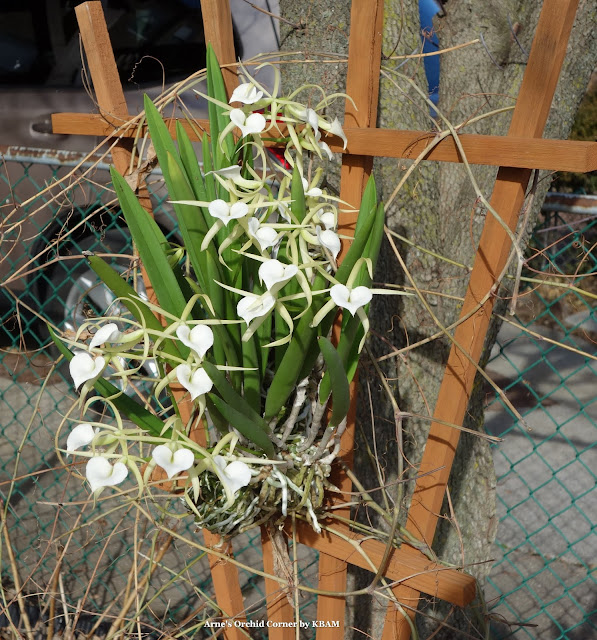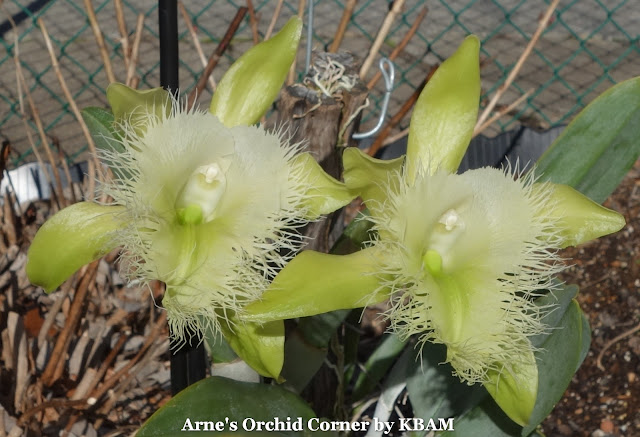 |
Oncidium croesus
|
Oncidium croesus orchid, where Croesus is the rich King of Lydia (500 b.c.), is a species of the genus Oncidium. This species was first described by Heinrich Gustav Reichenbach in 1857.
This orchid is native to Brazil and came from the coastal mountains near Rio de Janeiro and the nearby Organ mountains, at elevation of 400 to 600 meters.
 |
| A) A close look of the four fully opened flowers. |
 |
| B) Arne purchased this orchid last year and as usual, he mounted this orchid on a piece of tree cork. He tied the orchid to the piece of cork with fishing lines. |
 |
| C) The flowers are up to 4.5 cm in diameter with a golden yellow lip and the rest of the flower segments are dark brownish-purple. The dorsal petal is about 1 cm long and ~0.5 cm wide, while the side petals are ~ 1.5 cm long and ~0.5 cm wide. |
Since first purchasing this orchid, March 1st, 2019, we are very happy to see all these flowers blooming. This is our first flower cascade, and happily, they are all still fully opened open today. Until my next post, have a great week.

















